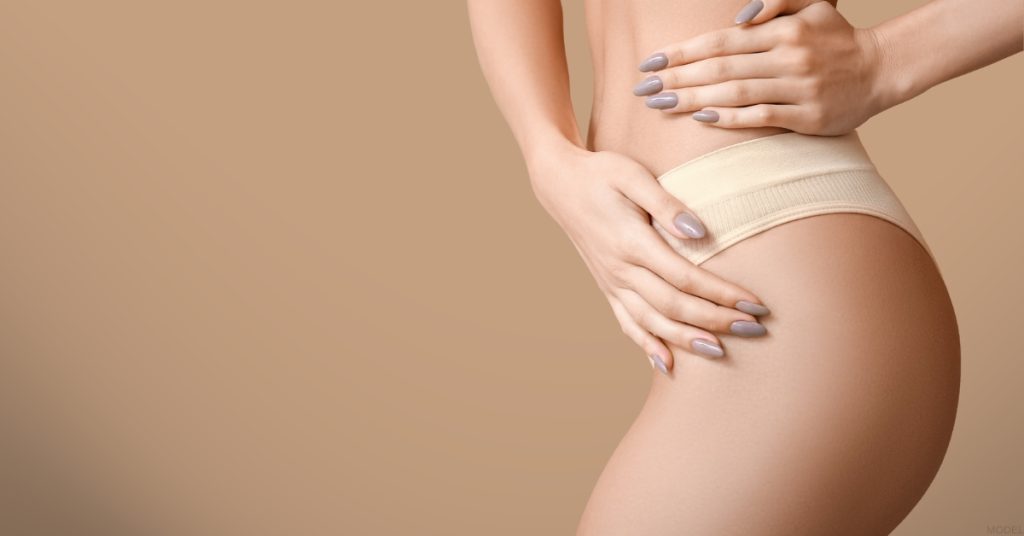Body lift surgery is transformative, removing excess skin and reshaping your contours, especially after significant weight loss. However, it’s important to remember that after an upper or lower body lift, scarring is an inevitable part of the healing process. Because informing and empowering you is an essential part of our whole-patient-care philosophy, we’re breaking down what body lift scars look like, how they evolve, and how you can minimize their appearance for the best long-term results.
What Causes Scarring After a Body Lift?
Scars form as part of your body’s natural healing process. When your surgeon makes an incision, your body produces collagen to seal the wound. While this is a normal and healthy response, the final appearance of your scars may vary depending on several factors, including:
- Your skin type and genetic predisposition
- The amount of tension placed on the incision
- Your postoperative care and sun exposure
- Smoking or underlying health conditions that impair healing
Working with a skilled, board-certified plastic surgeon like Dr. Hagopian ensures precise incision placement and closure techniques that promote cleaner, less noticeable scars.
Where Are Body Lift Scars Located?
The placement of body lift scars depends on the type of lift performed. Dr. Hagopian prioritizes discreet incision placement to ensure that scars are inconspicuous, even while he delivers optimal contouring results.
Upper Body Lift Scars
An upper body lift targets sagging skin in the upper back, chest, and arms. It is often performed after massive weight loss. Dr. Hagopian may place incisions in the following places:
- Along the bra line or upper back, where they can be hidden beneath clothing.
- Under the breasts or along the inframammary fold to lift the chest and remove rolls or bulges.
- Along the underside of the upper arms (as part of an arm lift) to eliminate “bat wings.”
Dr. Hagopian tailors each incision plan to your anatomy and clothing preferences, ensuring that any visible scars are minimal and well placed.
Lower Body Lift Scars
Lower body lift scars typically follow a circumferential pattern, wrapping around the lower torso to remove excess skin from the abdomen, hips, outer thighs, and buttocks.
- The incision is usually placed low on the abdomen and back, in a position that most undergarments and swimsuits can conceal.
- Vertical incisions extending down the inner thighs may be necessary to address significant skin laxity.
While more visible than horizontal incisions, vertical scars allow for greater skin removal and smoother contours in patients with more extensive needs.
How Body Lift Scars Change Over Time
Right after surgery, it’s normal for body lift scars to appear discolored—often dark brown, purple, or grey on deep skin tones or red or pink on lighter skin tones. Over several months, the scars typically flatten and fade, becoming lighter in color and less noticeable. You can expect significant improvement in scar appearance by the 6- to 12-month mark.
However, some individuals may be prone to hypertrophic scars or keloids, especially if there’s a genetic predisposition. That’s why it’s essential to monitor your healing progress and attend all postoperative appointments with Dr. Hagopian to ensure proper scar management.
Tips To Minimize Body Lift Scars After Surgery
Proactive care goes a long way in reducing the visibility of scars. Dr. Hagopian may recommend:
- Silicone gels or sheets: These create a protective barrier and help soften scar tissue.
- Sun protection: UV exposure can darken scars permanently, so always wear sunscreen or cover the treated areas.
- Gentle massage: Massaging scars can improve circulation and soften fibrous tissue.
- Hydration and nutrition: Proper healing starts from within—eat a balanced diet and stay well hydrated.
Dr. Hagopian may also suggest advanced scar management options, including:
- Laser treatments to reduce pigmentation and smooth skin texture.
- Microneedling to stimulate collagen production for healthy skin turnover.
- Steroid injections to minimize thick, raised scars.
These nonsurgical medical spa therapies are typically introduced a few months after surgery, once the incisions have fully closed.
Setting Expectations, Supporting Body Confidence
Body lift scars are a natural and manageable part of the body contouring journey. With the right approach and ongoing care, most patients find that their scars fade beautifully over time. If you’re considering a body lift, allow Dr. Hagopian to walk you through what to expect and how to care for your skin after surgery. Request a consultation using the online form or call us at (404) 885-8542.







Leave a Reply